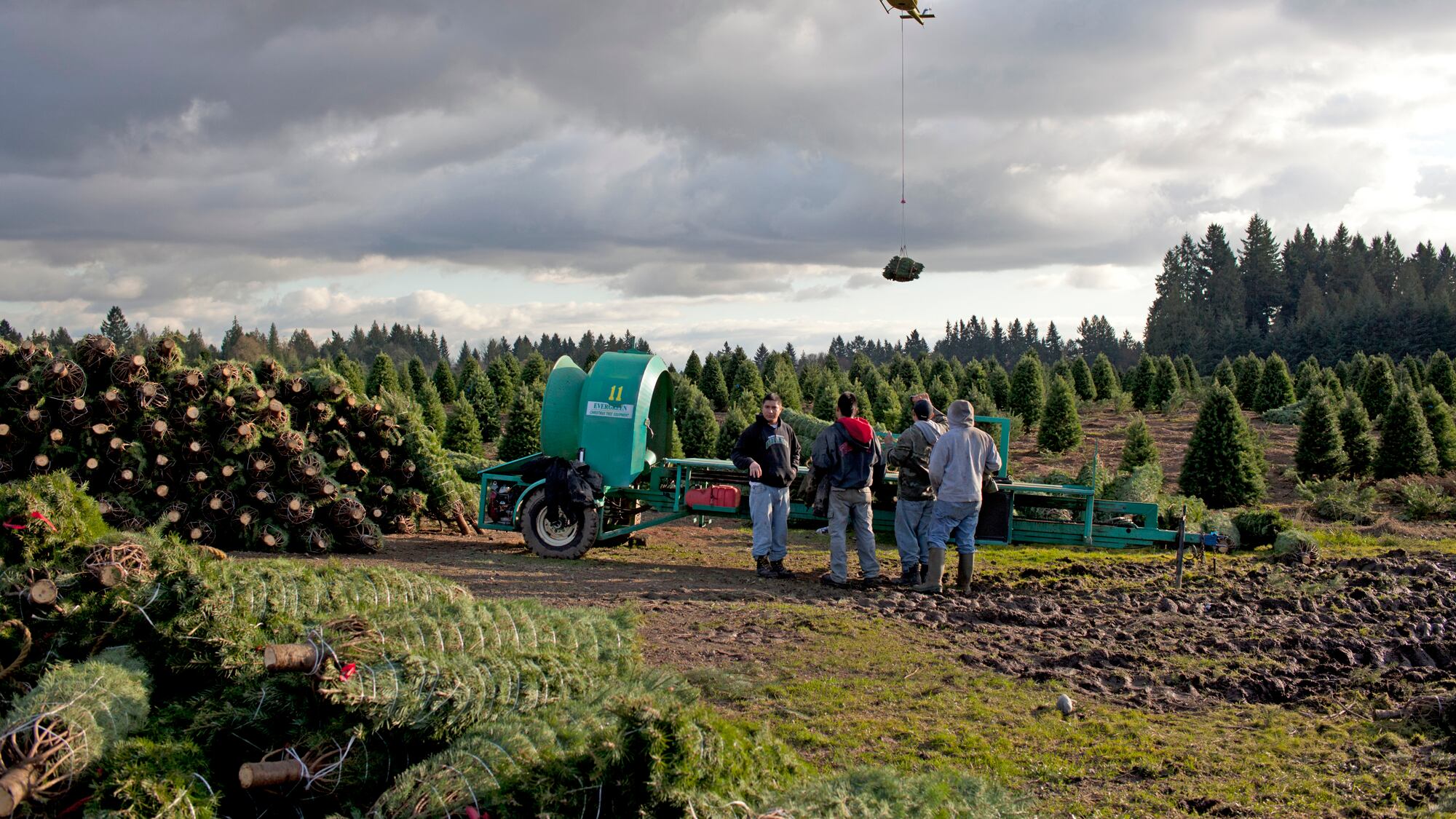As the holiday season heats up, Oregon Christmas tree farmers are expressing concerns about what Oregon's drought is doing to their crop.
But is the state's pot farming frenzy also to blame?
As WW reported last week, the succession of hot, dry summers for the past three years has seriously stunted regional Christmas tree growth. That's left some farmers, like Portland's Dave Roy, considering getting out of the business altogether. (This year, drought conditions killed 90 percent of his new crop.)
Today, a new report from Reuters graphically shows Oregon's dominant position in the Christmas tree trade:
"Over half of the trees grown in the United States are harvested in only six counties — two in North Carolina, and four in Oregon," Reuters reports. "The top producer, Ashe County in North Carolina, harvested almost two million trees in 2012."
Clackamas County was a close second to Ashe County, producing 1.88 million trees, followed by Marion, Benton and Polk Counties.
Last Friday, in a report on the price increase of Christmas trees for U.S. consumers, national business magazine Fortune suggested another Christmas-killing culprit: cannabis.
According to the National Christmas Tree Association, tree costs spiked 17 percent between 2015 and 2017, and are expected to rise another two percent this year. Fortune attributes the price increase to three things: "the economy, bad weather, and farmers shifting to more lucrative crops, in some instances marijuana in the Pacific Northwest."
While the image of jolly Oregon farmers abandoning firs for cannabis Christmas trees feels on-brand in Portland, Chal Landgren, a Christmas tree specialist with Oregon State University, says that's not what's happening around the state.
"I have no idea where the marijuana idea came from," Landgren tells WW, "and I don't know any Christmas tree growers who have switched to grow it. A few growers have switched to growing hazelnuts, largely because they require less labor, I'm told."
Landgren isn't the only expert skeptical about weed wooing tree farmers.
Casey Grogan, president of the Pacific Northwest Christmas Tree Association and owner of Silver Bells Tree Farm outside of Salem, says he's most concerned about competition from fake Christmas trees. "Their increasing popularity has made it questionable if farming real trees will always be an option for us," Grogan tells WW.
Reuters highlighted another rapidly growing threat—fake trees from China.
Fake trees accounted for nearly 44 percent of all Christmas trees sold in the U.S. in 2017, according to federal figures, up from 29 percent in 2009.
Grogan adds that although Oregon Christmas tree production decreased by 26 percent between 2010 and 2015, he has "no concern about Oregon being the top tree producer."
"Over the last 3 summers we have seen higher than average mortality. This means we have to replace them, which has made it hard to find additional seedlings," he says. "I think seedlings supplies will come up in the next few years, until then lower than average amounts of trees will be planted."


